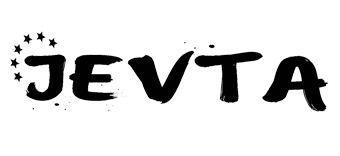Capitalization: What It Means in Accounting and Finance
Likewise, this journal entry only impacts the balance sheet in form of either increasing one asset and decreasing another asset at the same time or increasing one asset together with the increase of one liability. But later on, the company’s return on assets (ROA) and return on equity (ROE) are lower because net income is higher with a higher assets (and equity) balance. Upon dividing Capex by the useful life assumption, we arrive at $50k for the depreciation expense. One of GAAP’s primary goals is to match revenue with expenses, so recording the entire Capex at once would skew financial results and result in inconsistencies. The Capitalize vs Expense accounting treatment decision is determined by an item’s useful life assumption.
Summary of Depreciation
If the total number of shares outstanding is 1 billion, and the stock is currently priced at $10, the market capitalization is $10 billion. Additionally, we expect the equipment to provide similar benefits to our business for each accounting period over the four years of its useful life. Our reporting date of the year-end is December 31 which we will make all necessary adjusting entries and close the account for the period. Another aspect of capitalization refers to the company’s capital structure. Capitalization can refer to the book value cost of capital, which is the sum of a company’s long-term debt, stock, and retained earnings.
- For a five-year asset, multiply 20 percent (100%/5-year life)×2(100%/5-year life)×2, or 40 percent.
- Help her classify the expenditures as either capitalized or expensed, and note which assets are property, plant, and equipment.
- When a company is ready to get rid of a capital asset, it will most likely want to sell it.
- There are many benefits to capitalization, but the most significant benefit is the expense reduction in a given period of time.
Capitalize vs. Expense – Impact on Net Income
Many lenders require companies to maintain a specific debt-to-equity ratio. If large long-term assets were expensed immediately, it could compromise the required ratio for existing loans or could prevent firms from receiving new loans. In accounting, a fixed asset is a type of capital asset that is tangible that a company intends to use for more than one year. A fixed asset is usually a building or PPE that is depreciated over time.
Examples of business capital assets
Capitalizing in business is to record an expense on the balance sheet in a way that delays the full recognition of the expense, often over a number of quarters or years. The process is used for the purchase of fixed assets that have a long usable life, such as equipment or vehicles. In finance, capitalization is also an assessment of a company’s capital structure.
US tax definition versus broader economic definition
Also, the amount of principal owed is recorded as a liability on the balance sheet. The accumulated depreciation balance sheet contra account is the cumulative total of depreciation expense recorded on the income statements from the asset’s acquisition until the time indicated on the balance sheet. Capital assets are generally tangible, illiquid, long-term assets that carry higher value compared to ordinary assets. Capital assets often have a benefit that extends beyond one year, and companies usually use capital assets as an integral part of their business operations. Companies often also represent personal assets of an individual; in this situation, capital assets are the significant pieces of investment that person owns.
For leased equipment, capitalization is the conversion of an operating lease to a capital lease by classifying the leased asset as a purchased asset, which is included on the balance sheet as part of the company’s assets. These items are fixed assets, such as computers, cars, and office buildings. The costs of these items are recorded on the general ledger as the historical cost of the asset. Capitalized assets are not expensed in full against earnings in the current accounting period. A company can make a large purchase but expense it over many years, depending on the type of property, plant, or equipment involved.
One of their first decisions involved whether they should continue to pay someone else to silk-screen their designs or do their own silk-screening. To do their own silk-screening, they would need to invest in a silk screen machine. As shown in the journal entry for capitalization of the fixed asset above, we do not record the expense immediately after purchasing the fixed asset. However, as we use the fixed asset for the period, the expense should incur as well in order to match the benefits we receive from the asset. We can make the journal entry for capitalization of fixed asset by debiting the purchased cost of the asset into the fixed asset account and crediting the same amount into the cash account or payables account.
An asset is considered a tangible asset when it is an economic resource that has physical substance—it can be seen and touched. Tangible assets can be either short term, such as inventory and supplies, or long term, such as land, buildings, and equipment. The useful life is the time period over which an asset cost is allocated.
The primary purpose of capital assets is to help generate revenue for a company, either through direct use in its operations or through the sale of products or services. For instance, a bread factory might purchase a new industrial oven to increase its production capacity, or a software company may purchase computers needed by its staff to program applications. A capital asset is an investment of money in some kind of fixed asset. In the context of a business, a capital asset helps the company make products, is intended to be used for more than a year and is not inventory. In the context of individuals, a capital asset is an investment such as real estate, securities, a business or other such investment assets.
Companies set a capitalization limit, below which expenditures are deemed too immaterial to capitalize, as well as to maintain in the accounting records for a long period of time. A larger company might set a higher capitalization limit, on the grounds that charging smaller items directly to expense will have no material https://www.adprun.net/ impact on its financial statements. Overall, business capital assets are any assets that a company uses to generate income or profit over a period of time, rather than being sold immediately for a profit. These assets are typically long-term investments and they play a crucial role in the success of the business.
When a company is ready to get rid of a capital asset, it will most likely want to sell it. It can also be claimed by a bank in lieu of debt or lost target costing and how to use it in foreclosure. Real estate sales are also subject to capital gains taxes, but the IRS has special rules that can help mitigate the burden.
Likewise, the fixed asset will provide benefits to the business for more than one accounting period. Hence, we should capitalize the cost of the fixed asset to the balance sheet upon purchase and allocate the capitalized cost of such fixed asset over the periods that it provides benefits to the business. Your new colleague, Marielena, is helping a client organize his accounting records by types of assets and expenditures. Marielena is a bit stumped on how to classify certain assets and related expenditures, such as capitalized costs versus expenses.
For example, land is not depreciated because depreciation is the allocating of the expense of an asset over its useful life. It is assumed that land has an unlimited useful life; therefore, it is not depreciated, and it remains on the books at historical cost. The journal entry to record the purchase of a fixed asset (assuming that a note payable, not a short-term account payable, is used for financing) is shown in Figure 4.9. Assets are recorded on the balance sheet at cost, meaning that all costs to purchase the asset and to prepare the asset for operation should be included. Costs outside of the purchase price may include shipping, taxes, installation, and modifications to the asset.
Capitalized costs are incurred when building or purchasing fixed assets. Capitalized costs are not expensed in the period they were incurred but recognized over a period of time via depreciation or amortization. In this journal entry, the depreciation expense is an income statement item while the accumulated depreciation is a contra account to the fixed asset on the balance sheet. Likewise, while total expenses increase, total assets decrease as a result of allocating the cost of the capitalized asset to the income statement. For instance, a company vehicle will last more than one accounting period.
In accounting, typically a purchase is recorded in the time accounting period in which it was bought. However, some expenses, such as office equipment, may be usable for several accounting periods beyond the one in which the purchase was made. These fixed assets are recorded on the general ledger as the historical cost of the asset. As a result, these costs are considered to be capitalized, not expensed. A portion of the cost is then recorded during each quarter of the item’s usable life in a process called depreciation.
Capitalize refers to the act of recording an expense on a balance sheet as an asset. Only when an asset has been capitalized, the depreciation will then start when the asset is put into use. However, there is one way that capital assets provide some tax relief. The Annual Investment Allowance (AIA) is a government scheme to encourage businesses to invest in their businesses. You can deduct the cost of the assets from the taxable profits of the business. There are parameters as to what qualifies for capital asset purchase under AIA.



 Lokacije
Lokacije Broj telefona
Broj telefona Email adresa
Email adresa